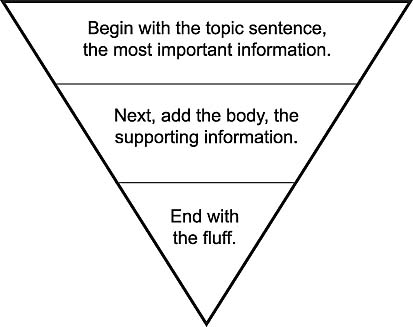University Libraries Web Docs
Writing for the web, Styleguide, Website Components, and Resources.
Overview
University Libraries represents the University of Alabama on an academic and institutional level, not just as a library, but also as a repository, archive, computer lab, and location for students to engage both academically and socially, all in support of the university mission. Consequently, the University Libraries Web Site Style Guide will reflect this usage and will help the Libraries provide students with access to information and resources.
Web Services’ top priority is to provide users with easy-to-use, accessible, and “findable,” web content. To achieve this, the following style guide presents the Libraries with rules and best practices, regarding site content, writing methods, text usage, and additional website design elements.
Content Strategy
In short, your content has to be awesome. It has to be truly helpful. It cannot be about you. It has to be about your customers’ wants and needs.
-- Forbes Magazine
The User Interface has a strict navigation structure, meaning that new pages or alterations to existing pages will need to fit within this new organizational structure. Pay close attention to link locations, content placement, top-level navigation, and sub-navigation areas.
What can I put on the website?
Anything that is relevant to your department’s services, public information about your department, or information about specialized areas or content types. Website content must not be suitable for a LibGuide or a Blog. We can create LibGuides to promote library resources or services that are specific to an academic research pursuit. Blogs also detail library resources and services, but done so frequently and require multiple postings.
What areas will I need to talk to web services about editing?
We identified 23 content areas where the design is extensively intermixed with the content; changes to these areas will need web services intervention to ensure the integrity of the design. Web Services have based the design of the site on usability and analytics data, and it is important that the content creator not alter them accidentally or arbitrarily.
In no way does Web Services claim responsibility or ownership of the content; content creators retain full ownership and responsibility of their page content. Web Services simply assists in the design, the look, and overall feel of how the page presents the content.
- Databases (Application)
- Maps, Locations, Hours (Application)
Directory (Application)
Using the Libraries
Research Tools
- Library Help
- News, Events, and Exhibitions
- About
Libraries & Collections
E-Resources (E-Books, E-Journals)
Reserves
- Interlibrary Borrowing
- Sanford Media Center
- Computers & Software
- How Do I… (Ask A Librarian)
- Alabama Digital Humanities Center
- Print, Copy, Scan
- Circulation Policies (Borrow, Renew, Request)
Equipment
Floor Maps
Classes, Workshops, Tours
- Practice Presentation Rooms
- Social Media Page
What are the rules for adding additional content?
Follow the template, use our styles as per the document, or simply let the elements (
,
How do I use our styles and fonts? How will the elements appear, and what does each style look like?
Please see the Style Elements section of this document
Writing for the Web
The University Libraries website is not the final destination for users, but rather a tool to help connect users to the relevant resources and services available at the libraries. Additionally, research has shown that users interact with website content in a very specific way.Important guidelines for writing for the web:
- Be succinct : write no more than 50% of the text you would have used in a hardcopy publication
- Write for scannability : don't require users to read long continuous blocks of text (http://www.nngroup.com/articles/be-succinct-writing-for-the-web/)
Additional Resources:
Writing for the Web http://www.nngroup.com/topic/writing-web/
Kill the Welcome Mat http://www.nngroup.com/articles/blah-blah-text-keep-cut-or-kill/
10 Tips for Good Web Writing http://webdesign.about.com/od/writing/a/aa031405.htm
Content
- Keep content relevant to topic and goal; your writing should have a goal.
- When writing, think of an inverted pyramid - get to the point in the first paragraph, then expand upon it.
- One idea per paragraph.
- Web pages need to be concise and to-the-point; short, meaty paragraphs are better than long rambling ones.
- Use action words.
- Tell your readers what to do and avoid the passive voice. Keep the flow of your pages moving.
 -- Lynda Felder, Peachpit.com
-- Lynda Felder, Peachpit.com
Format
- Try to use lists instead of paragraphs - lists are easier to scan than paragraphs.
- Try to limit list items to 7 words: studies have shown that people can only reliably remember 7-10 things at a time. More than 7 is occasionally acceptable, depending on context.
- Sentences should be as concise as you can make them. Use only the words you need to convey essential information.
- Include internal sub-headings: sub-headings make the text more scannable. Your readers will move to the section of the document that is most useful for them, and internal cues make it easier for them to achieve this.
- Make your links part of the copy: links are another way Web readers scan pages. They stand out from normal text, and provide additional cues as to what the page is about.
Always
- Proofread your work - typos and spelling errors will send people away from your pages. Make sure you proofread everything you post to the Web.